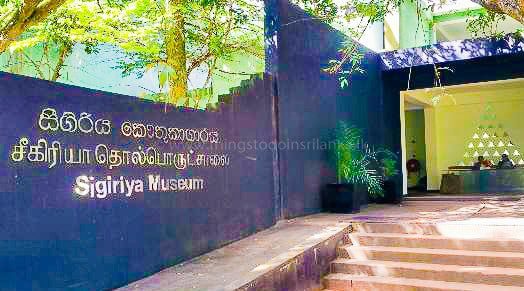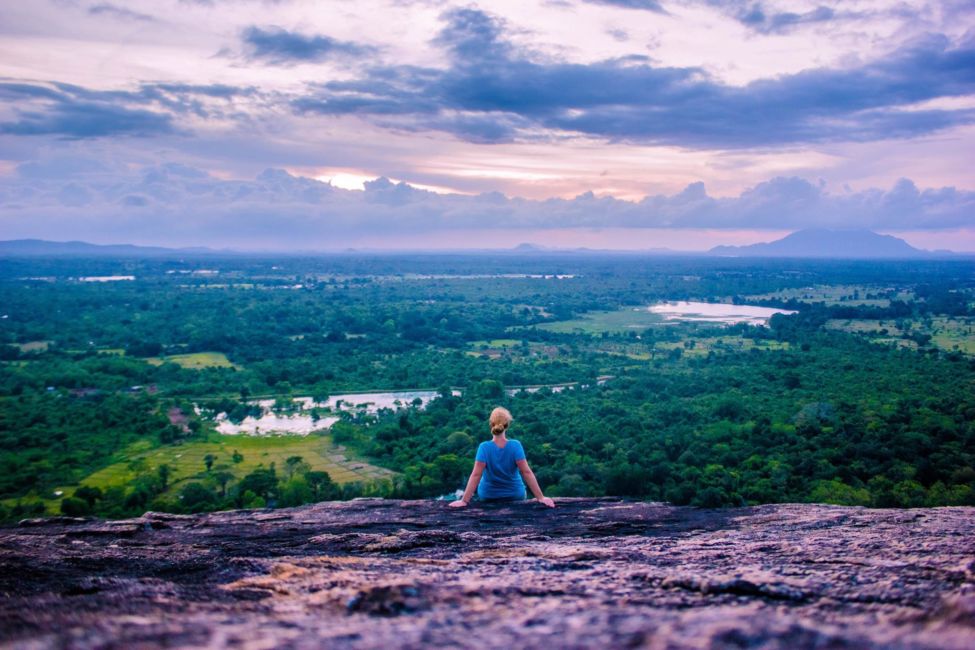SIGIRIYA
Sigiriya or Sinhagiri is an ancient rock fortress situated close the town of Dambulla in the central province of Sri Lanka in the Matale district. The name relates to a site of historical and archeological importance dominated by a huge rock column almost 200 meters (660 ft) high.
ATTRACTIONS IN SIGIRIYA

SIGIRIYA ROCK FORTRESS
This location was chosen by King Kasyapa (477–495 CE) for his new capital, according to the ancient Sri Lankan chronicle. On the top of this rock he built his palace and decorated with colorful frescoes on its sides. He constructed a gateway in the shape of a huge lion on a tiny plateau about halfway up the side of this rock.
This place's name is derived from this structure— the Lion Rock, Sinhagiri. After the death of the king, the capital and the royal palace were abandoned. It was used up to the 14th century as a Buddhist monastery. Sigiriya is a World Heritage Site listed by UNESCO today. It is one of ancient urban planning’s’ best preserved examples.
Lal Srinivas and Mirando Obesekara described Sigiriya as a turning point in Ravana's post-historical archeology. According to them, Sigiriya may be the Alakamandava (City of the Gods), which King Kuvera who was Ravana's half-brother (Ravan) as mentioned in the Ramayanaya built up before 50 centuries ago.
The Sigiriya architect was a Danava called Maya Danava, according to Ravana Watha's Palm Leaf Book (Puskola Potha) (about Ravana). On orders provided by Ravana's dad, King Visthavasa (Vishravasamuni), he constructed up Sigiriya. The Sigiriya was called Alakamandava during that era and it was called Chithrakuta during King Kuwera's era. Vibeeshana became the king after Ravana's death and he moved the kingdom to Kelaniya. Chiththaraja used Alakamandava as his residence according to this book. Chiththaraja was Vibeeshana's relationship with a Yakka Patrician.
Chiththaraja was also said to be one of the people who helped Prince Pandukabhaya get the kingship. Pandukabhaya's parents were descended from Chiththaraja's tribe.
Moreover, Ravana Watha was also portrayed as having chosen the Chithrakuta as his residence by Prince Kassapa who was King Daathusena's son because her mom was a follower of Yakka's faith and she also came down from them. King Kassapa was the only king to rebuild and preserve the Chiththakuta as King Ravana did. The renowned wall paintings in the Chiththakuta (later Sigiriya) can be regarded as showing about the land of the Sinhala. The Ravana Watha explains that the blue-colored lady picture represents the Yakka Tribe and other ladies represent the Tribes of Naga (Serpentine), Deva (Divine) and Gandabhbha (Celestial Musicians) and the beautiful flowers demonstrate the country's unity.

SIGIRIYA MUSEUM
The Sigiriya museum is considered to be South Asia’s most appealing. The Sigiriya Museum reflects its cultural, technological and archeological importance, managed by the Central Cultural Fund. The Sigiriya Museum can explore three centuries of archeological studies on Sigiriya Sri Lanka, a UNESCO World Heritage Site.
The museum's design was influenced by Sigiriya's advanced architecture itself. It pursued the Green Building idea with the masterful use of water and trees to stimulate a real experience. In addition, the floors are constructed to allow tourists to feel the Sigiriya climbing through the ascending terraces and broad stairs.

PIDURANGALA ROCK
A few kilometers north of Sigiriya, Pidurangala is a huge rock. The two rocks have an interconnected history: while in the 5th century King Kasyapa built Sigiriya Rock Fortress, he shifted monks residing around Sigiriya to a new monastery on Pidurangala Rock. An ancient cave temple still houses items from different vintages that represent Buddhist, Hindu and Western views, and
it is believed that the stupa on the left side of the temple door marks the place where King Kasyapa was cremated. Pidurangala is a more difficult climb than Sigiriya, so those with bad physical fitness should not try it. There is no clear route to the top: steep, irregular steps give way to an expanse of rocks and crevices to be navigated by climbers to achieve the summit. From the top, the surrounding landscape offers magnificent views and an incredible view of the magnificent Sigiriya Rock.
